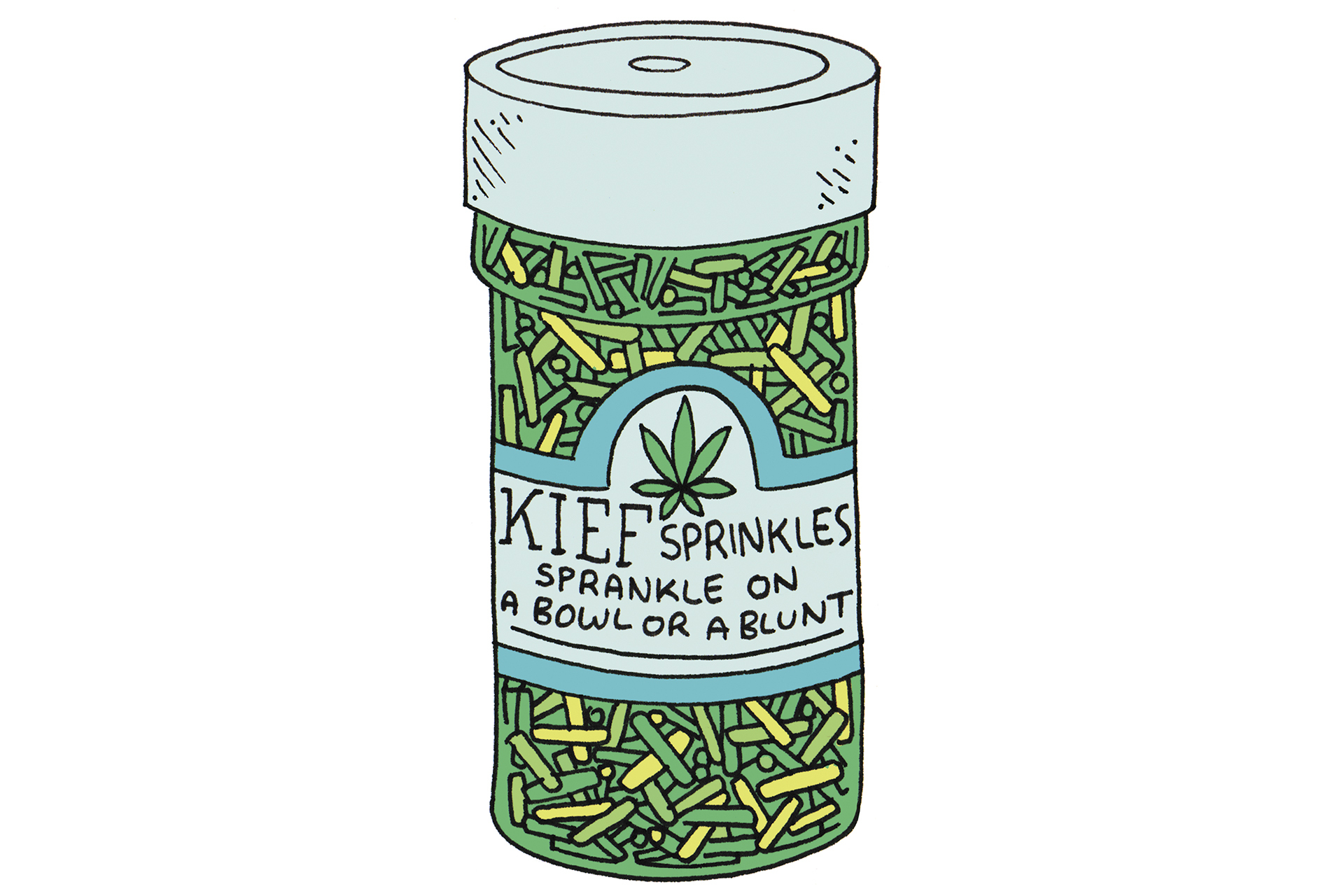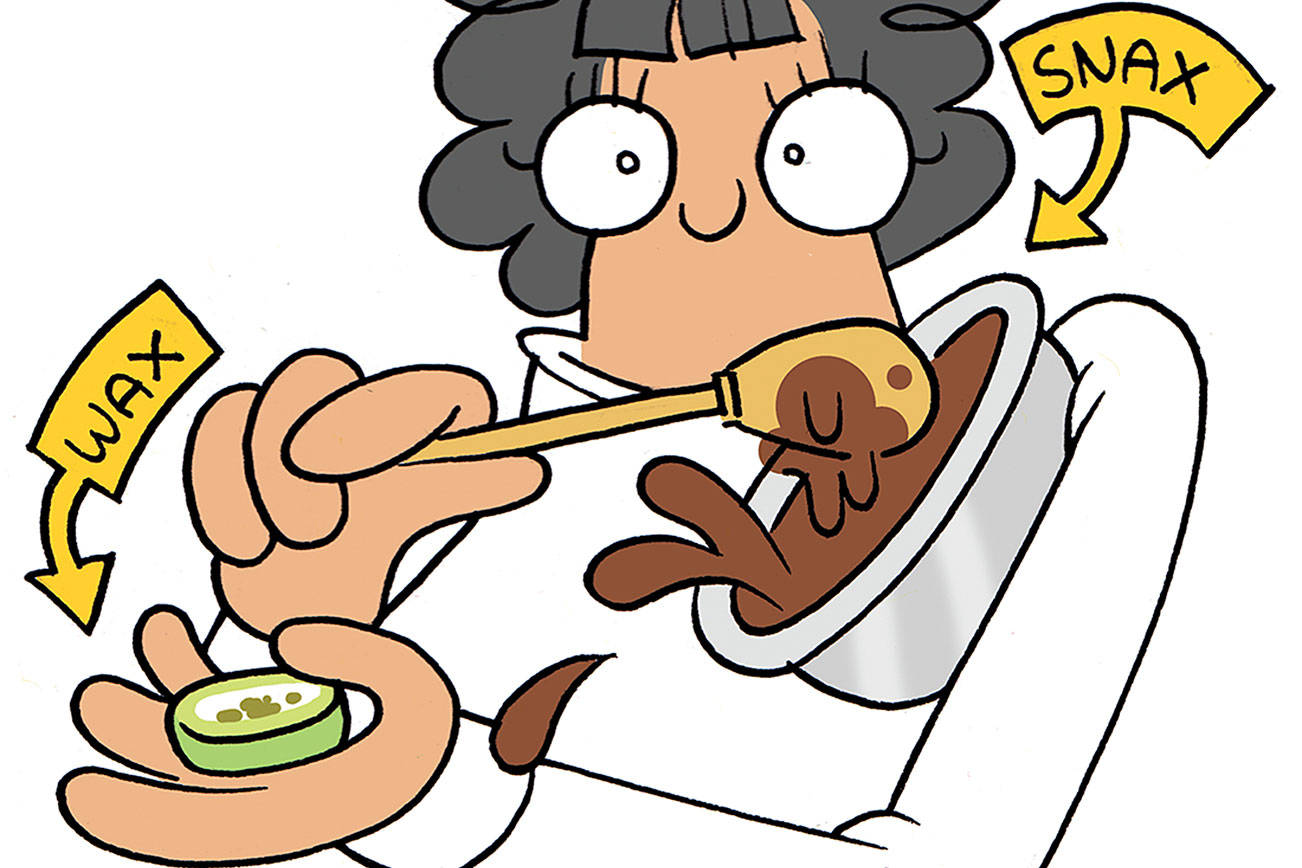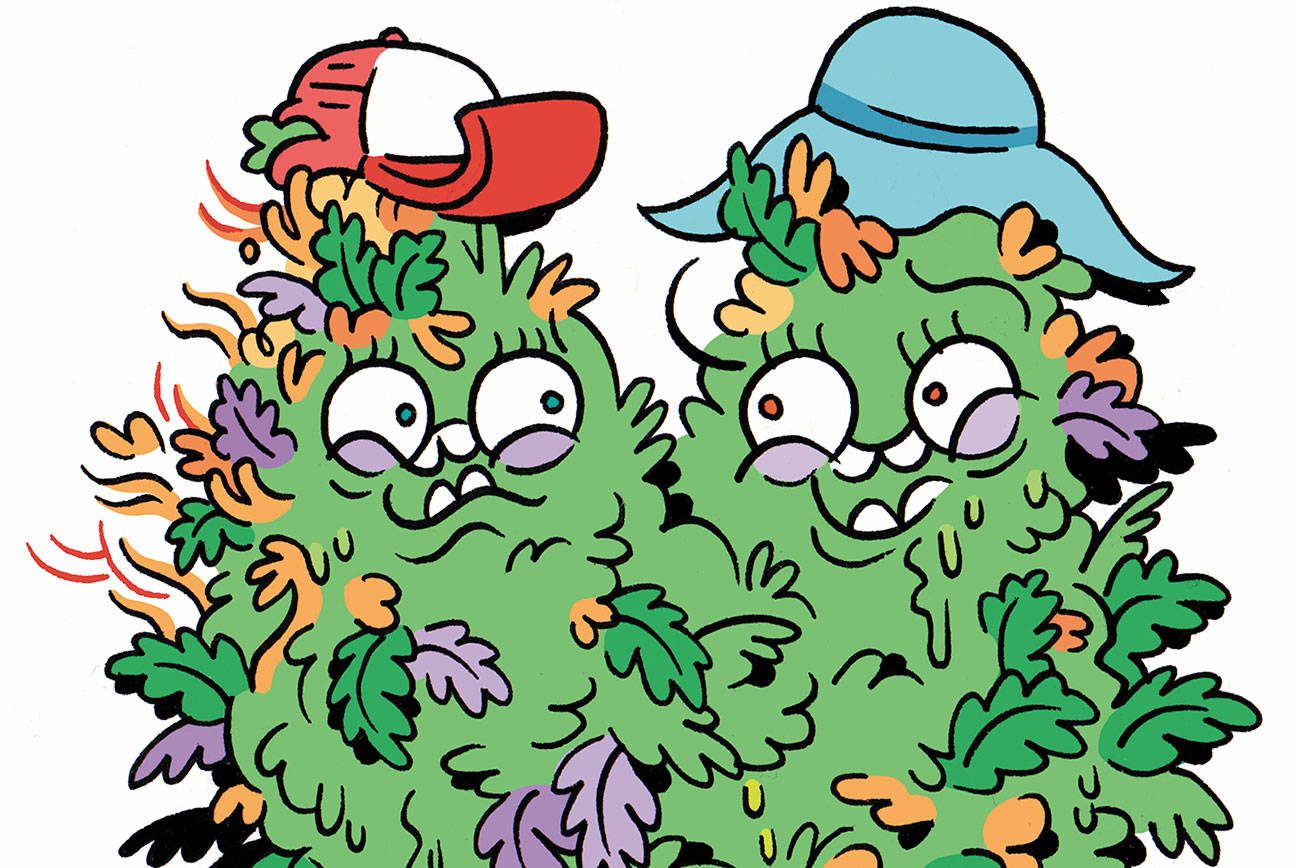Last week we looked at the most basic forms of cannabis concentrates, like cannabutter and tinctures. This week we’ll take a look at kief, hash, and dry sift—some of the very easiest concentrates to make, because all you need is weed, just a couple tools, and time.
The important element behind these three techniques is the way the trichomes—the tiny hairs covering the plant—are harvested, so starting with plant material with beautiful trichomes is key.
As with most of the concentrate methods, step one is decarboxylating, or gently heating, your weed for a few minutes to cook off the water in the plant material. This will also help “activate” the THC throughout the plant, making it that much easier to get the most out of your plantstuff.
Kief is the lovely dust that crumbles off your well-cured buds. This dust is filled with the precious trichomes that produce our beloved terpenes and cannabinoids, home to the THC, CBD, and other elements we look for in weed. The very simplest way to collect kief is to get a three-level grinder from any local smoke shop. The top level is where you grind your buds; the middle will have a fine screen that catches the ground flowers, but allows kief—a bright-green dust—to fall through and collect in the bottom level. It’s like scraping the cream off the top of milk. You can sprinkle kief into a joint or on top of a bowl, or use it in food or drinks—like the especially potent Indonesian weed drink bangh, made with kief and coconut milk.
Hash, in a broad sense, is basically kief taken a step or two further. During or after traditional kief collection, heat and pressure are applied to rupture the heads of the trichomes, releasing the cannabinoids. We know humans have been creating hash for at least 4,000 years, as the Hindus discuss its collection and uses in holy and medical texts. The very oldest method is the simplest: gently rolling fresh plant material between your hands, which is why it is sometimes called “rub” or “fingerhash.” The kief breaks off and sticks to your hands, coating them in a dark, sticky substance, which is gathered and pressed into patties or bricks. Because this traditional style of hash is often made from the very freshest plant material, many people will bypass decarboxylation.
But to really experience the joys of kief, get two to four silk screens and sift your kief several times. This is dry sifting. The less plant material kief contains, the paler it becomes, until it reaches an off-white or blonde color. Not only will kief maintain much of the signature “nutty” cannabis flavor, many of the terpenes will carry over, and the distinct flavors of the strains will shine through. After sifting the kief through increasingly finer screens (over several hours … just binge-watch something while you do it) , you will be left with just the heads of the trichomes. At this point, if you look at the kief through a microscope, you will see only little golden clear balls. This grade of kief is so good it can produce a “full melt”—it will melt completely away, and is suitable for dabbing (we’ll talk more about dabbing in an upcoming column). The flavor profiles are true and strong. This really is a superior smoking experience, all without solvents or expensive equipment. Anyone can make this—it just requires patience.
Dry sift always leaves me with an intense sense of accomplishment (and, let’s be honest, an intense buzz), but plain old kief is by far my favorite of the three. It’s effortless and tasty, and the look on a friend’s face when you pass a bowl topped with that neon green powder is priceless.
stashbox@seattleweekly.com







